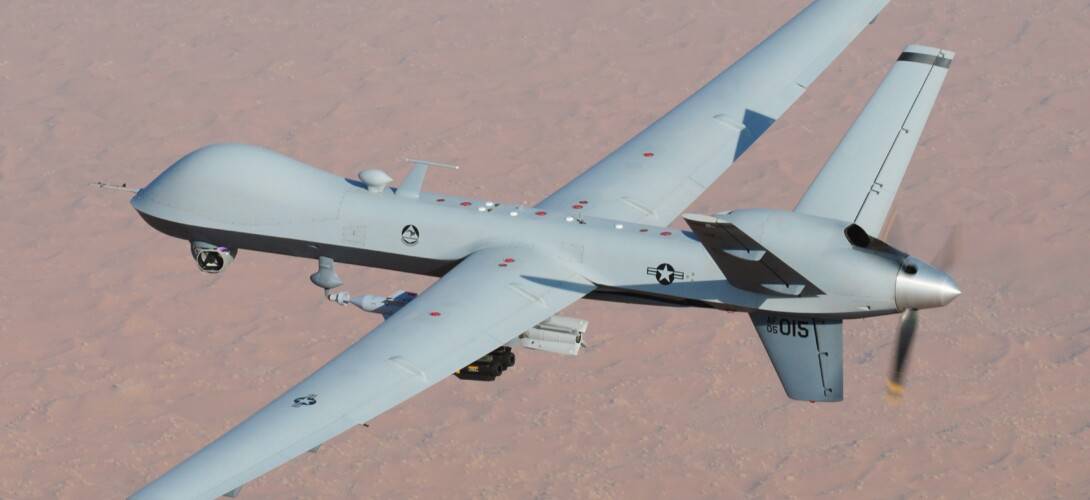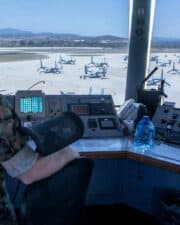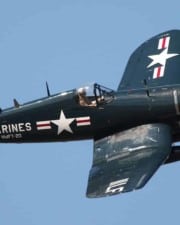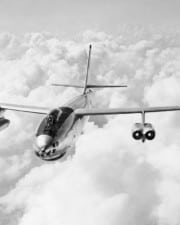Drones have played an important role in US military operations since the 1990s, but what are the main specific types, and how do they compare? The two main contenders are the MQ-1 Predator and the MQ-9 Reaper, both highly capable, highly classified drones manufactured by General Atomics of San Diego. And both presently the drones used by most modern military powers in the West.
If you’re an Air Force veteran or serving in the military, you’ll find this interesting for sure. We’ll talk about each drone in detail, where they’re better used and ultimately, which drone outclasses the other from a purely strategic standpoint.
About the Predator Drone
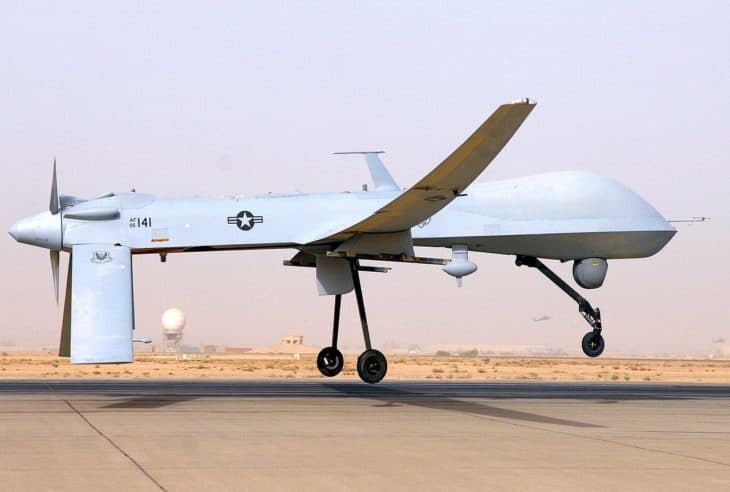
The General Atomics MQ-1 Predator is a remotely piloted aircraft (RPA), which was used by the US Air Force and the CIA from the mid-1990s until it was superseded by the MQ-9 Reaper in 2018 (see below). The Predator is flown remotely by a ground-based crew of 2.
The remote crew sit in a work area that resembles an airplane cockpit, although it’s a good deal more spacious. Each remote pilot has a monitor fed by the drone’s forward camera, a navigational display and a control side stick.
Control is by satellite link when there is no direct line of sight.
Why was the Predator Drone developed?
The Predator drone was developed mainly for aerial reconnaissance and observation, equipped with a range of cameras and sensors for that purpose.
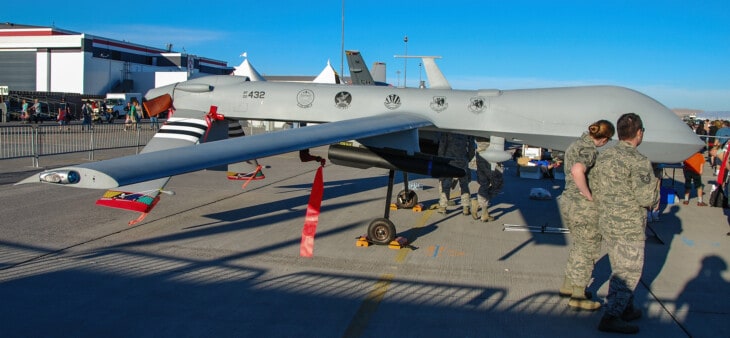
What purpose did the Predator Drone serve?
In addition to its reconnaissance role, the Predator drone was modified to carry armaments, such as two Hellfire AGM-114 air-to-ground missiles.
Details of the combat operations carried out using the Predator are still classified at the time of writing. However, its role in observation and reconnaissance is well documented.
Originally titled the R-1 Predator (R for reconnaissance), the Predator played an important information-gathering role in the Afghan campaign of 2001.
Later renamed the M-1 Predator (M for multi-role), the Hellfire-armed Predator took part in offensive operations whose details are not available to us.
Although some of the details are classified, the Predator’s strategic roles were probably as follows:
- Close Air Support: protection of friendly forces by attacking hostile targets in their vicinity, to neutralize threats.
- Air Interdiction: often termed Deep Air Support, air interdiction is about knocking enemy targets that may pose a threat to friendly forces in the future.
- Intelligence, Surveillance and Reconnaissance (ISR): information gathering is crucial in any military operation. The sources of that information are many. Aerial reconnaissance plays a vital part in giving the decision-makers the intelligence they need to secure a favorable outcome.
About the Reaper Drone

The General Atomics MQ-9 Reaper is a remotely-flown military aircraft which first flew in 2001, then entered service in 2007. Like the older Predator, a ground-based crew of 2 pilots flies the Reaper remotely.
Why was the Reaper Drone developed?
The older Predator drone had suffered some losses during its early operations, with around one in three aircraft succumbing to foul weather conditions. There was a need for a more powerful, more versatile derivative of the Predator.
What purpose does the Reaper Drone serve?
Unlike its predecessor, the Reaper drone is designed expressly as a combat aircraft, although it does of course have the ability to carry out aerial reconnaissance.
It can carry more weapons than the Predator, and can operate at higher altitude, thanks to its turbine power plant.
The Reaper drone has been involved in a number of precision attacks, notably the removal of Al-Qaeda leader Ayman Al-Zawahiri in 2022, orchestrated by the CIA. The target was identified on the balcony of a house in Kabul, Afghanistan.
An MQ-9 Reaper drone was deployed, which launched a laser-guided Hellfire R9X missile directly at the target. Rather than an explosive warhead, the missile was equipped with rotating blades that eliminated the target without harming anyone else in the building.
Similar weaponry, in the form of missiles fired from a Reaper drone, was used to take out Iranian Major General Qasem Soleimani in Baghdad, in 2020, shortly after he arrived at the airport.
The MQ-9 Reaper drone was able to reach the specific targets without risking civilian casualties.
How are the Predator Drone and the Reaper Drone different?
The Reaper drone is larger, heavier and more powerful than the older Predator drone, with a longer range and more hardpoints where armaments such as missiles can be attached.
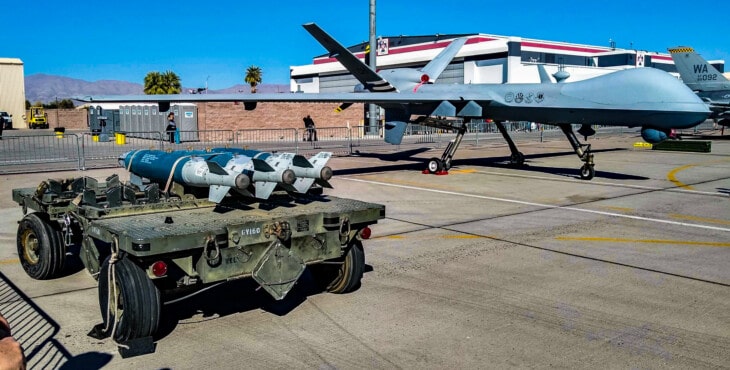
| Specification | MQ-1 Predator | MQ-9 Reaper |
| Range | 777 mi (1,250 km; 675 nmi) | 1,200 mi (1,931 km; 1,043 nmi) |
| Max Speed | 135 mph (217 km/h; 117 kn) | 300 mph (483 km/h; 261 kn) |
| Service Ceiling | 25,000 ft (7,620 m) | 50,000 ft (15,240 m) |
| Weight Empty | 1,130 lb (513 kg) | 4,901 lb (2,223 kg) |
| Max Takeoff Weight | 2,249 lb (1,020 kg) | 10,494 lb (4,760 kg) |
| Armament | 2 missile attachment hardpoints | 7 missile attachment hardpoints |
| Length | 27 feet (8.23 m) | 36 feet (10.97 m) |
| Width | 48 ft 7 in (14.81 m) | 65 ft 7 in (19.99 m) |
| Height | 6 ft 11 in (2.11 m) | 12 ft 6 in (3.81 m) |
| Engine | Rotax 914F four-cylinder piston | Honeywell TPE331-10GD turboprop |
The tails of the drones differ in that the Predator has an inverted V-tail, whereas the Reaper’s V-tail is on the upper rear fuselage. The Predator’s V-tail derives from its naval drone ancestry – the original design had to be able to fit into a torpedo tube.
The power units of the drones are very different. The Predator is powered by a 115 hp Rotax 914F four-cylinder piston engine, which allows it to travel 460 miles from base, patrol for a maximum of 14 hours, then return to base.
The much more powerful Reaper has a 950 hp Honeywell TPE331-10GD turboprop power plant, affording greater range, speed, cruise altitude and payload. Interestingly, at $30.2 million per airframe, the Reaper works out less expensive than its $40 million predecessor.
How are the Predator Drone and the Reaper Drone similar?
Both the MQ-1 Predator and the MQ-9 Reaper are remote-controlled aircraft with no crew on board. Both are flown remotely by ground-based pilots. Both can receive and transit data directly along a line of sight if the operating pilots are nearby.
Alternatively, both can communicate and receive control inputs via satellite.

The overall design of the two drones is similar. Both have a high aspect-ratio wing situated midway along the fuselage, and both have tricycle landing gear configuration.
Both drones have inverted vertical stabilizers below the rear fuselage. Each is driven by a pusher propeller mounted at the rear of the fuselage.
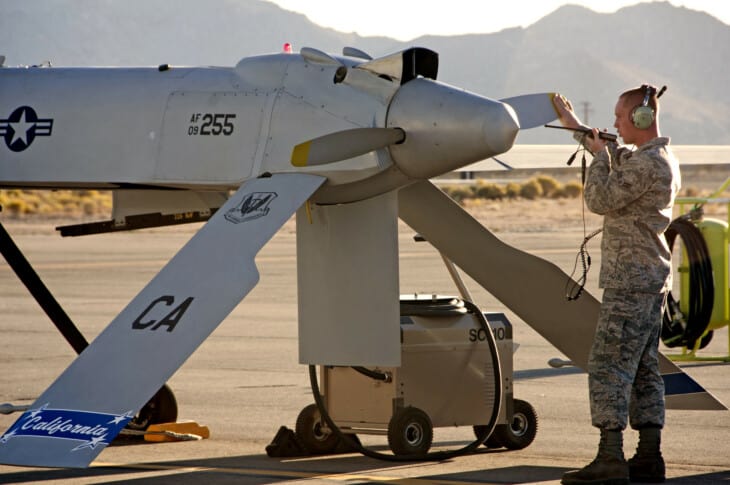
Paradoxically, although both are capable of inflicting a lot of closely focused damage on their targets, the Predator and Reaper are barely capable of defending themselves.
Although they relay good forward and downward vision to their operators, they are not able to monitor the space around them for incoming threats.
Furthermore, if the operator of either aircraft detects hostile activity, neither is capable of a rapid change of direction or altitude to avoid it.
The high-aspect-ratio wings are not built to withstand high g-loads. Neither drone is designed to operate in an active conflict zone where it may come under direct attack.
Both the Predator and the Reaper have exceeded one million flight hours each in service.
What’s better about the Predator Drone?
In short, not all that much. The Predator is slower and more expensive than the Reaper, and cannot carry anywhere near as much armament.
Perhaps the best thing about the Predator is what it has done to help the fight against terror in Afghanistan and Iraq, much of which remains classified.
To its credit, the Predator served the US military faithfully for many years before the Reaper took over in 2018. Perhaps, in time, when the relevant reports become declassified, we shall learn of pivotal offensive operations in which the Predator played a key role.
We can certainly say the Predator has helped keep our nation safe, both in a direct sense by participating directly in military campaigns against those who wish us ill, and indirectly by being the ancestor of today’s Reaper.
General Atomics would surely never have been able to develop the Reaper without the stepping stone of the predator, itself a truly great aircraft in its day.
What’s better about the Reaper Drone?
Pretty much everything.
The Reaper flies higher, further and faster than the Predator, and can carry a formidable array of ordnance beneath its wide wings, including up to four AGM-114 Hellfire missiles, and three other weapons such as Joint Direct Attack Munitions and Paveway II laser guided bombs.
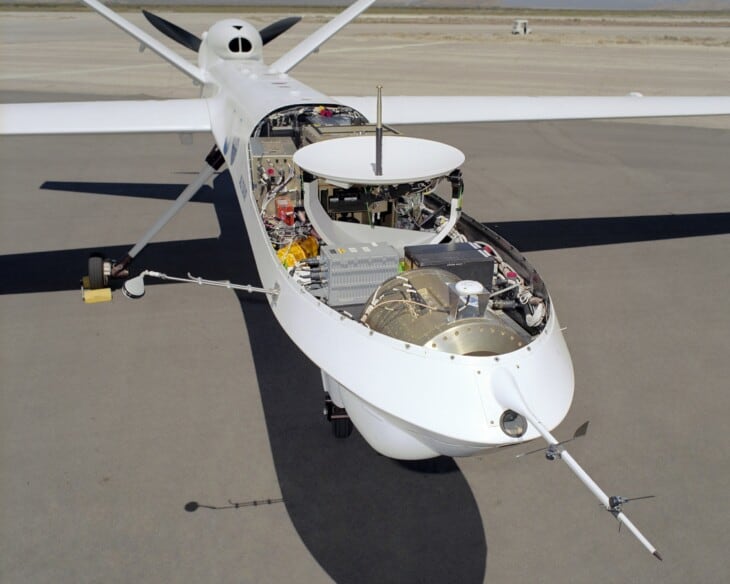
The Reaper has some high-profile kills to its credit. Its precision attack capabilities protect civilians in conflict zones, as well as giving the bad actors real cause to worry.
Like any good son, the Reaper won’t forget its father, the Predator, and all that the elder guy did to make his offspring what he is.
Conclusion
It’s not much of a contest, really. The Predator did us proud, in Afghanistan and Iraq, and paved the way for the next generation of Remotely Piloted Aircraft.
The Reaper is certainly the military drone of the immediate future, for both reconnaissance and precision offensive operations, having proven itself in recent years by giving the bad guys an extremely sharp reminder of what they can expect to come their way if they threaten us.
Related Posts
